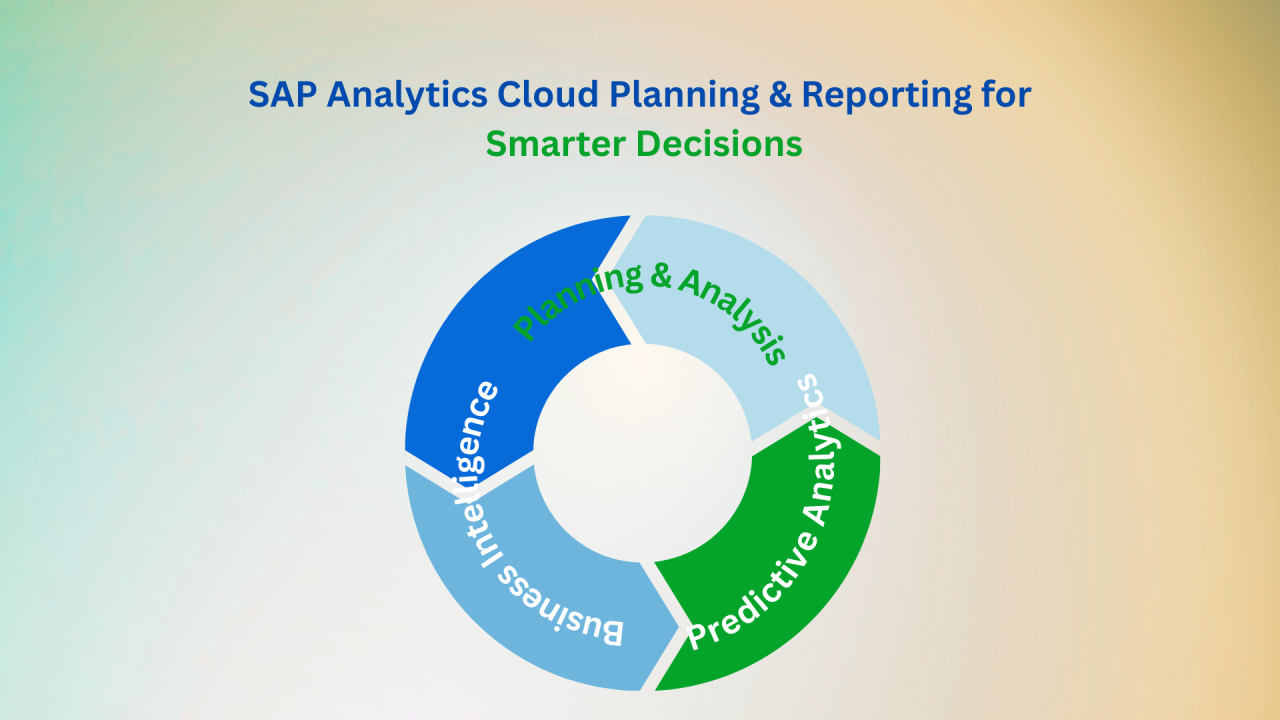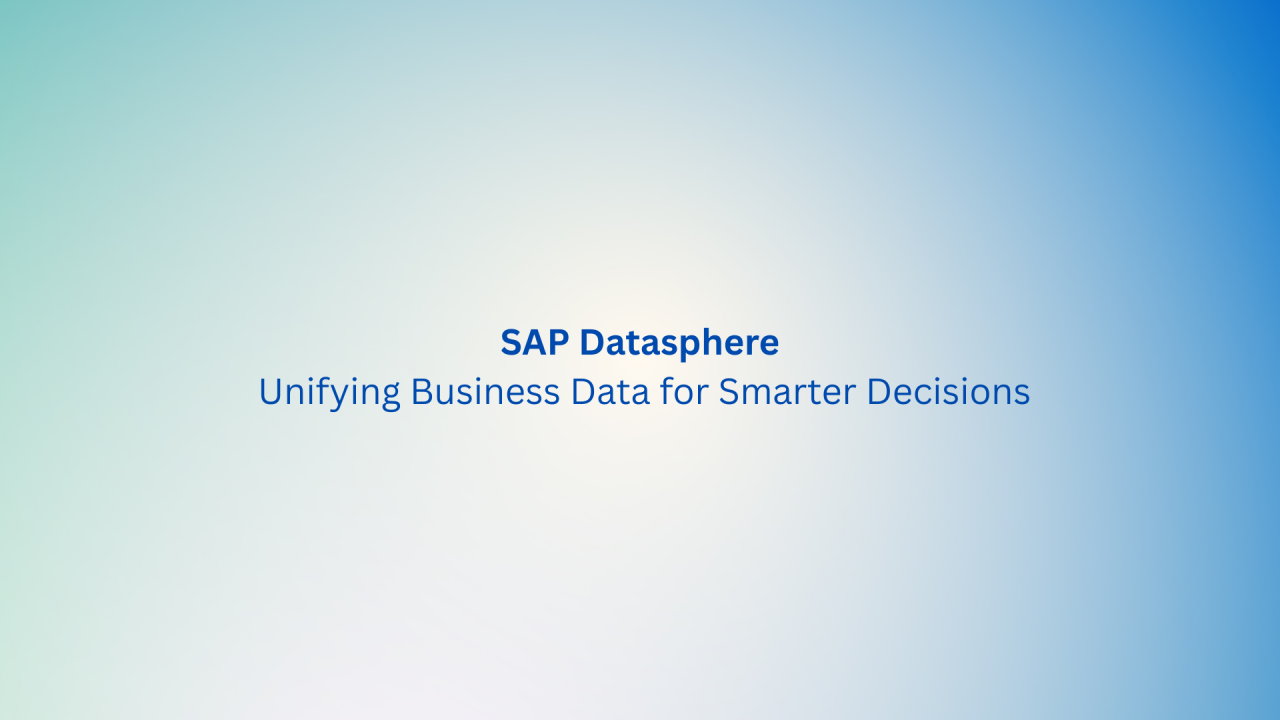Introduction
In today’s dynamic business environment, anticipating future trends and demand is vital for decision-making. With SAP Analytics Cloud (SAC), businesses can leverage powerful time series forecasting capabilities to gain actionable insights.
In our previous newsletter, we unpacked the fundamentals of time series forecasting with SAP SAC, focusing on its ability to reveal trends, seasonality, and fluctuations. By understanding these patterns, businesses can make data-driven predictions and navigate complex decisions with confidence.
Today, we’re taking a step further by applying a real-world scenario where SAC was used to achieve accurate forecasts using real-world methodologies, culminating in an optimized strategy by predicting sales numbers across product families using SAP SAC’s advanced predictive scenario capabilities.
The Business Scenario: Predicting Sales with Historical Data
As we explained the dataset structure in our earlier newsletters, this time, we aim to predict the sales numbers for each product across KaggleMart and KaggleRama stores in different countries with SAP SAC Time Series Forecasting feature. The dataset is between 01/01/2017and 31/12/2020 and includes detailed records such as store, product, and daily sales numbers. The aim is to predict sales numbers for the next 15 days for each store’s product.
Accurate forecasting is crucial to:
- Optimize inventory levelsfor diverse product lines.
- Plan operational strategiestailored to regional demand trends.
- Support budget allocationand promotional campaigns effectively.
Using SAP Analytics Cloud, we leveraged historical data to build predictive models and refine results to achieve the lowest possible Mean Absolute Percentage Error (MAPE), a metric used to measure the accuracy of a predictive model. It calculates the percentage difference between the actual and predicted values, providing an easy-to-understand error rate.
Step-by-Step Approach in SAP SAC
Historical Data Preparation:
- The dataset, spanning from 01/01/2017 to 31/12/2020, was structured with columns for date, product, store, and sales number.
- Cleaning and preparing the data ensured it was ready for time series analysis in SAP SAC. Especially, the date column is crucial, additionally, outliers are removed because of the huge amount of data.
Predictive Scenarios in SAP SAC:
- We used SAC’s time series forecasting capabilitiesto build predictive scenarios, focusing on the following:
- Country-Specific Analysis: Sales were forecasted for individual products in stores located in different countries.
- Observation-Based Insights: To fine-tune accuracy, different observation windows (weekly, monthly, and aggregated data) were tested.
Forecasting Methodologies:
- Rolling Window Analysis: This approach captured short-term trends without losing sight of broader patterns. 3 different windows options have been compared and the minimum MAPE Score was selected as the optimal model. Furthermore, different last-day options and observations are included during these feature engineering steps.
- MAPE Optimization: By iterating on the model configurations, the lowest MAPE was achieved with 15 15-day and 6-month window size, ensuring the most accurate forecasts for each product and region.
Integration into Planning Scenarios:
After optimal model selection (Model 4), forecast outputs can be integrated into SAC Planning Scenarios, enabling decision-makers to perform:
- What-if analysisfor promotional impacts.
- Resource allocation adjustments based on predicted trends.
Result Analysis: Time Series Component Impact
As part of our sales forecast analysis, we broke down the Time Series Component Impact to understand the driving factors behind the model’s predictions. This analysis in the Explanation Tab provides valuable insights into how various components contribute to forecast accuracy for selected entities. Below is the summary:
Key Components and Their Impact:
Trend (87.28%):
- The trend is the most significant contributor, accounting for 87.28% of the variance in the data.
- It represents the overall direction of sales over time, reflecting long-term patterns like consistent growth or decline.
- This dominance indicates that the historical progression of sales plays a critical role in predicting future outcomes.
Cycles (6.13%):
- Cycles capture regular, repeating patterns in the data.
- In this case, a weekly cyclewas observed, highlighting periodic fluctuations, such as increased sales during weekends or specific days of the week.
- While its contribution is smaller, at 6.13%, it still provides actionable insights for planning weekly operations.
Final Residuals (6.59%):
- Residuals represent the portion of the data that the model couldn’t explain after accounting for trends and cycles.
- The low residual value (6.59%) demonstrates the robustness of the forecasting model, as the unexplained variance is minimal.
Result Analysis: Weekly Cycle Breakdown
In addition to the overall Time Series Component Impact, SAP SAC analyzed the specific contribution of the Weekly Cycle to sales predictions. This component, representing 6.13% of the total impact, highlights sales patterns across days of the week, revealing actionable trends for operational planning. Let’s dive into key observations:
Peak Impact Days:
- Saturday: The highest positive impact day, showing a significant boost in sales activity. This aligns with consumer behaviour trends, where weekend shopping peaks.
- Sunday: Another critical day with a positive impact, though slightly lower than Saturday, indicating a continuation of strong weekend sales.
Negative Impact Days:
- Monday and Tuesday: These days show negative impacts, reflecting a dip in sales activity at the start of the week. This is common as consumers typically shop less following weekend purchases.
- Wednesday and Thursday: These midweek days also exhibit minimal positive influence, suggesting opportunities for promotions or marketing efforts to boost sales.
Friday as a Transition Day:
Sales begin to recover towards the end of the week, making Friday a critical transition point into the high-impact weekend period.
Business Implications:
- Weekend Optimization: Businesses should capitalize on the weekend trend by ensuring adequate inventory, staffing, and targeted promotions for Saturday and Sunday.
- Midweek Promotions: To counteract the negative impacts of Monday and Tuesday, strategic promotions or discounts can be introduced to stimulate sales during these quieter days.
- Friday Strategies: As a pre-weekend day, Friday can be leveraged to build momentum, encouraging consumers to prepare for weekend activities.
By integrating this Weekly Cycle Breakdowninto operational strategies, businesses can enhance their responsiveness to consumer behaviour and maximize sales potential throughout the week.
Insights for Business Scenarios:
- Trend as a Key Driver: The significant impact of the trend suggests a need for businesses to focus on long-term factors influencing sales, such as seasonal changes, market conditions, or strategic growth initiatives.
- Weekly Cycles for Operational Planning: The identification of weekly sales patterns provides an opportunity to optimize resource allocation, such as adjusting inventory levels or planning promotions around peak sales days.
- Model Accuracy: The low residual value ensures confidence in the forecast’s accuracy, supporting data-driven decision-making for store management.
This detailed component impact analysis not only validates the effectiveness of the forecasting model but also offers practical insights to enhance decision-making at both strategic and operational levels.
Key Insights from the Forecasting Process
Through these steps, several important insights emerged:
- Country-Level Granularity Adds Value: Predicting sales at the country and store level highlighted region-specific trends that were crucial for tailored planning.
- Seasonal Trends Are Key: Products like “Kaggle Recipe Book”displayed recurring spikes, emphasizing the importance of capturing seasonality in models.
- Data Window Choices Matter: Combining historical data from 2017 onwardwith shorter rolling windows provided a balance of granularity and noise reduction.
By achieving the lowest MAPE, the forecasts enabled efficient decision-making, ranging from inventory management to optimized promotional campaigns.
Conclusion
SAP SAC is not just a forecasting tool; it’s an integrated platform that connects predictive analytics, business planning, and intelligencein one solution. The ability to work with historical data, apply advanced models, and visualize results empowers businesses to make informed, data-driven decisions.
This newsletter showcased how SAP SAC’s predictive capabilities were applied to forecast sales for products across countries, leveraging historical data. By focusing on minimizing MAPE and testing observation windows, we unlocked data-driven insights that transformed business planning.





